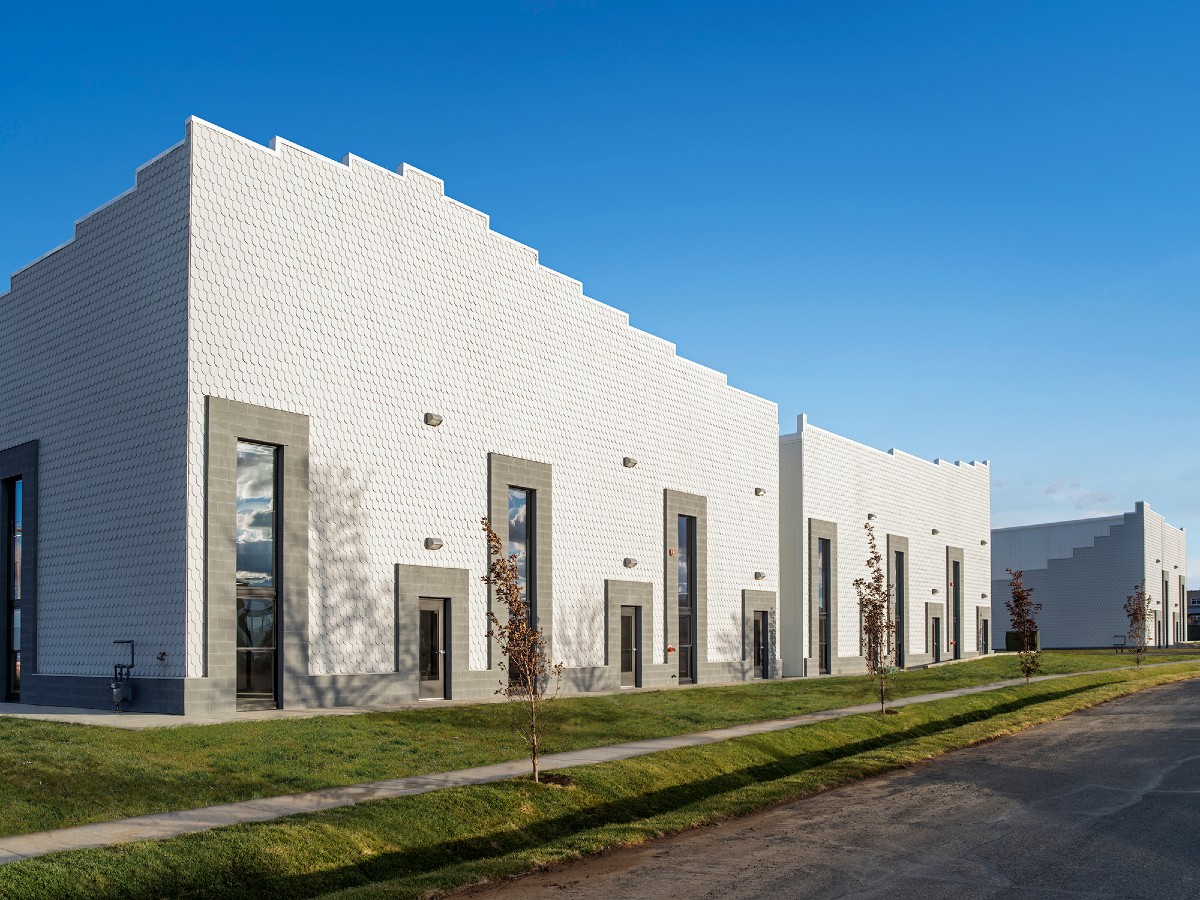This compendious, extensively illustrated slab of a book tackles, among other things, the development of the factory system, working conditions and working class
resistance, utopian planning and modernist architectural design, the effects of suburbanization of industry, just-in-time production and containerization, fashion, urbanism, gentrification, and craft through such an onrush of dense information that it is often hard to ascertain exactly what the book is about. The nearest thing to a common thread—other than chronology—is an exploration of the factory in the city. That is, the role of industry in urbanism, what it means for a city to be a place of material production, how that production is housed and how its workers live and work, and, crucially, whether or not there is a future for urban manufacturing after 70 years of decentralization and inner-urban de-industrialization in Europe and the United States.
This central thread is so interesting that much of the rest of the book—basically a history of design and factories, familiar from the likes of Gillian Darley’s Factory—could have been cut away to make the book more lean. The eclecticism of the source material could do with major pruning, and the editing is often careless: Robert Owen’s Clydeside Utopia was New Lanark, not New Harmony, the account of Chicago slaughterhouses in The Jungle was written by Upton Sinclair, not Sinclair Lewis, to name two of several slips. Nonetheless, this excess might be the point—an appropriately daunting mesh of interlinked processes and stories. The question of why the factory left the city is put down to wartime paranoia and social planning; Rappaport takes the Jane Jacobs line that zoning industry out of inner cities was unnecessary and damaging to urban economies, which may have been true, but as recent histories like John Grindrod’s Concretopia might remind us, urban industry in dense 19th century cities like Glasgow was often extremely toxic and unsafe to the working class communities who had to live next door to it. However, her case here draws also on more radical sources, such as French Marxist philosopher Henri Lefebvre’s assertion of the “right to the city,” and especially the inner city, being cleared of undesirables in Lefebvre’s 1960s Paris. The end result of “the removal of industries away from public view” was also the removal of certain groups of people. As counter-examples, she traces a history of integrated factory settlements, like Berlin’s modernist Siemensstadt, to suggest that there were other possible approaches than zoning and suburbanization.
Beginning with the wartime U.S.—with its vast, single-story complexes like Willow Run—and continuing even through socially experimental factories like Volvo’s more democratic, collaborative factory at Kalmar, the factory left the city and settled into sprawling, off-motorway sites, expansive of land and elusive of view. Perhaps the most exciting parts of the book are Rappaport’s studies of some “vertical urban factories,” as opposed to the flat, hidden, exurban factories where most things get made—in the west, at any rate. These go from 1820s Manchester, where, in Schinkel’s words, “the life of the city runs along the massive houses of the cotton mills, to Manhattan’s astonishing, multifunctional Starrett-Lehigh Building, where a train could enter the building from West 27th Street and proceed to the elevators located in the central core, load or unload onto trucks and the exit onto 28th Street,” and to more recent examples like Zaha Hadid’s BMW Leipzig, where workers walk past the souvenir shop on their way to work. These genuinely do feel like a better way of designing production into cities than placing “pancakes” on the edge of motorways—a means of planning that makes production and distribution networks (and their workers) visible, and by implication, changeable.
However, many cities outside of the U.S. and Europe really are made up of vertical urban factories even today—Shenzhen and Dhaka being a particular case in point. The 400,000-strong Foxconn factory, integrated with eight-to-a-room dormitories is one she describes at length, while the multi-story textile factories of Dhaka are sketched out more lightly, though the fact that the worst industrial accident in decades, at Rana Plaza, took place in a vertical urban factory would seem to temper its validity as a means to create fairer cities. Although Rappaport never loses sight of the consequences of design and industrial processes on actual workers’working conditions, the emphasis falls too much on best practices. These include the new vertical urban factories that exist in the west—craft beer breweries in Canada, bike factories in Detroit, American Apparel in the U.S.—which use a seductive combination of adaptive re-use, renewed craft traditions, and inner city sites, which somewhat masksthe fact that they’re just as much part of the process of inner-city gentrification as Willow Run was part of post-war suburbanization. None of them can even begin to offer the quantity of jobs once offered to the cities they stand in that the motor industry or textile industry once did; she points here to a gap between celebrated middle class “makers” and invisible proletarian“‘workers.” The last quarter of the book features many examples of beautifully designed, sustainable, semi-automated actories integrated into the city; but whether these could ever have the role in most people’s lives that the factory once did is a very different matter.
Vertical Urban Factory
Nina Rappaport, Actar Publishing, $64.95










